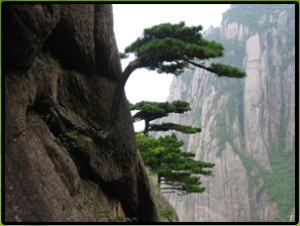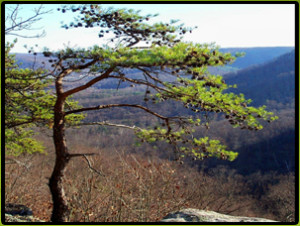History of the Bonsai
- 3 Comments.
- Apr, 28, 2015
- admin
- All Posts, The Art of Bonsai
Chinese History
 The first dwarfed trees occurred naturally in the wild and were discovered growing in the mountains of China. They were prized because their unique aged and gnarled appearance was not created by human hands. Thousands of years ago, the Taoists believed that recreating aspects of nature in miniature form endowed that particular recreation with a magical concentrated energy. This art form known as Penjing means tray scenery. Penzai or Punsai, a form of Penjing, translates into tray plant, which typically involved a landscape created with miniature trees and rocks.
The first dwarfed trees occurred naturally in the wild and were discovered growing in the mountains of China. They were prized because their unique aged and gnarled appearance was not created by human hands. Thousands of years ago, the Taoists believed that recreating aspects of nature in miniature form endowed that particular recreation with a magical concentrated energy. This art form known as Penjing means tray scenery. Penzai or Punsai, a form of Penjing, translates into tray plant, which typically involved a landscape created with miniature trees and rocks.
The Chinese developed the pruning and binding techniques that gave the trees an aged appearance along with unusually shaped features. Some believe the Toaists purposely shaped the branches, trunks and root structures to mimic the bodies of dragons, serpents and other animals of Chinese folklore. Others contend that the structural deformities more closely resembled yoga positions. Though the Buddhists undoubtedly created the Penzai for centuries, mention of the trees did not appear in documented form until around 600 A.D. The first pictorial evidence of the Penzai tree appeared in 706 A.D. in the tomb of Prince Zhang Huai. Upon entering the tomb, archeologists discovered painted frescoes depicting female servants carrying Penjing, which contained miniature trees and rocks.
Japanese History
 Also during this time, under the rule of the Hang Dynasty, Chinese monks migrated to Japan and other parts of Asia, taking with them the art form and examples of Penzai. The Japanese monks quickly learned the techniques required for making the miniature trees, which later became known as Bonsai. The Japanese also developed their own methods creating their own versions of the dwarfed trees, which many believed symbolized the harmony between man, soul and nature. As in China, the trees gained honor and reverence in Japan. The writer of an ancient scroll dated around 1195 A.D. expresses the appreciation and pleasure he derives from gazing at the unusually deformed little trees.
Also during this time, under the rule of the Hang Dynasty, Chinese monks migrated to Japan and other parts of Asia, taking with them the art form and examples of Penzai. The Japanese monks quickly learned the techniques required for making the miniature trees, which later became known as Bonsai. The Japanese also developed their own methods creating their own versions of the dwarfed trees, which many believed symbolized the harmony between man, soul and nature. As in China, the trees gained honor and reverence in Japan. The writer of an ancient scroll dated around 1195 A.D. expresses the appreciation and pleasure he derives from gazing at the unusually deformed little trees.
From the monasteries of the monks, bonsai trees made their way to the homes of the royals and the affluent. The trees then became status symbols and also reflected honor. By the 14th century, bonsai trees were a highly regarded art form. Bonsai owners originally displayed the plants outdoors. The affluent later created special shelves indoors which provided the bonsai with a place of honor. Beginning in the 1600s, the art form evolved again. Pruning techniques used generally removed all but the essential parts of the plant, which created a minimalist effect. These methods reflected Japanese culture and philosophy, which believed that refining one’s lifestyle meant eliminating all but the necessary elements. This philosophy holds true of the culture today and visitors see these simplistic elements in modern day Japanese gardens.
 During medieval times, bonsai trees became available to Japanese people of all social classes. The increased demand required more artists having the knowledge and skills necessary for creating the bonsai. The popularity of the trees also firmly engrained the bonsai into Japanese culture. Replicating the techniques of Taoists monks, the Japanese began creating a variety of miniature landscapes. Trees combined with buildings, people or rocks became known as bon-kei. Sai-kei was the term used for replicating a specific type or area of landscape.
During medieval times, bonsai trees became available to Japanese people of all social classes. The increased demand required more artists having the knowledge and skills necessary for creating the bonsai. The popularity of the trees also firmly engrained the bonsai into Japanese culture. Replicating the techniques of Taoists monks, the Japanese began creating a variety of miniature landscapes. Trees combined with buildings, people or rocks became known as bon-kei. Sai-kei was the term used for replicating a specific type or area of landscape.
News of the unique miniature potted trees spread to other parts of the world beginning in the mid-1600s, as merchants ventured to and from Asia. By the end of the 1700s, provinces in Japan began holding exhibitions and competitions. England’s Queen Charlotte received a bonsai as a gift in 1806. Major world cities that included London, Paris and Vienna, eventually featured the trees in world exhibitions. During this time, the Japanese shared some of their secrets in the art of creating bonsai.

Bonsai has donevwonders for my life.
Very nice blog
Bonsai has done wonders for my life.
Love the info